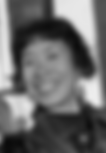The history of production design has influenced generations of production designers. We asked colleagues to tell us about film designs that inspired them in their own work.

Karen Murphy
"I am struck by the power of the film's design to make the ordinary appear exquisite and the emotion so present."

Trinka Lat
"Many of the films I love are not only well written and told, they were also successful in creating new realities."

Tom Meyer
"The experience and magic of the films and the movie theatre’s projected power to transport landed on me early."

Ryan Warren Smith
"My love for the world of production design was forever cemented."
February 3rd, 2024
What are some memorable film designs that influenced your work?

Karen Murphy
Karen Murphy studied architecture in Sydney, Australia, before joining Baz Luhrmann and Catherine Martin's art department on 'Moulin Rouge'. She was an art director on films such as 'The Matrix Reloaded' and 'The Matrix Revolutions', 'Star Wars Episode III' and 'Wolverine', and continued to collaborate with the Luhrmann-Martin team on 'Australia' and 'The Great Gatsby'. Karen's production design credits include 'The Light Between Oceans', 'A Star is Born', 'Queen and Slim', 'Chevalier' and 'Elvis', for which she was nominated for an Academy Award.
I am nostalgic for the art I found as my world expanded at university in the 1990s. Our campus was in the inner city of Sydney, where several theatres were showing independent cinema at that time. I saw films by Gus Van Sant, Wong Kar Wai, Spike Lee, Jane Campion, David Lynch, and many others there, and they have left an indelible mark on my sensibility. It seemed fitting when thinking about the prompt that I return to the work of one of those filmmakers.
I saw Wong Kar Wai's 'In The Mood For Love' when it came out 23 years ago, just a few years after my career had shifted from architecture to film design. Returning to it now, I questioned if I might feel differently about the film, but I don't. It is a perfect example of a film's design contributing to shaping the narrative. I vividly recall the mesmerising slow-motion walks the characters take through the beautifully textured, papered and humid alleyways to the noodle shop. The perfectly coloured, patterned and composed liminal spaces they exist in, the saturation of the colour that intensifies as the story unfolds, and the sensual tendrils of the cigarette smoke hanging in frame.
There was some criticism of this film - that the director relied on style over substance. I see it as the director using style to build a narrative; they are entwined. The designer, who also wears hats as a costume, hair, and makeup designer (and editor!), used frame obstructions: doorways, sheer coloured and patterned curtains, screens, walls, and late mid-century objects to create a voyeuristic feel. The tight geography of the house and the alleyways become markers of the loneliness of two people who like each other but cannot move past that. We see only a sliver of a room through a doorway, screen, partition, or behind a curtain, each piece of the environment intentionally occluding the other. A greater sense of space and emotional intimacy exists only in a few outlier spaces, such as the hallway with the red curtains flapping in the wind and the intensely saturated and patterned hotel room.
To me, 'In The Mood For Love' remains a rare film that feels like a piece of art. I am struck by the power of the film's design to make the ordinary appear exquisite and the emotion so present. Like the workings of a clock, each colour, element, pattern and object depends on the other.
As filmmakers, every project poses a problem for us to solve: the delivery of the story. I wonder if it is the design of other films I am influenced by or if they have helped shape my perception of the role of the production designer in finding the solution.






Tom Meyer
Tom Meyer just finished principal on HBO MAX’s upcoming production of 'Dune: Prophecy' set to premier in Q4 of 2024. His recent films include Warner/DC 'Black Adam' and 'Finch' with Tom Hanks for Amblin / Apple.
Growing up in Louisville Kentucky, almost every Friday or Saturday night at midnight, you could find me at the 1100 seat Vogue movie theatre. It was the last independent theatre in the city. Why midnight? That was the witching hour when long running cult classics would play.
The Marquee was a grand brightly lit celebratory affair to match the power and excitement of what went on inside this palace. Every Friday was 'The Rocky Horror Picture Show' (which ran for 24 years), sometimes with Eddie’s motorcycle loudly racing up the aisles of the theatre. Lining up outside, teenagers would dress up in costume, makeup, and black fingernail polish in homage to all the characters which was happily quite forward for a tiny Appalachian state in the 1980s. Buying a ticket at the central kiosk and crossing the ornate art deco lobby past the percolating popcorn was a true portal from the world I lived in outside.
On the other nights and at more reasonable hours, classics would be seen: 'Citizen Cane's snow globe falling out of hand, 'Lawrence of Arabia's cargo ship gliding through a desert, 'The Deer Hunter's Pennsylvania felt uncannily relatable to the Kentucky outside, 'Blade Runner's inky chiaroscuro lit world -though I wouldn’t learn that term untillater in school - everything Kubrick, Coppola, Wilder, Kazan, and endlessly quotable Monty Python films.
Before 'on demand'; this was as close as you could get and my band of mates that I had traveled with through grade, middle and high school went at will. The experience and magic of the films and the movie theatre’s projected power to transport landed on me early. I was asked to write on a single film that lit my fuse; when I reflected, so many films and film makers competed for the top honor, but they were all housed in the solid foundation of the Vogue Theatre.






Trinka Lat
Trinka Lat is a Filipino production designer and set decorator based in Berlin, Germany. As a Communication Arts Bachelor’s Degree graduate, she first started her filmmaking journey as a producer, director and editor and got her start in production design by designing over 50 music videos for famous bands in the Philippines. Trinka’s production design credits include 'What Isn’t There' by Marie Jamora, 'My Lady Boss' by Jade Castro. She recently set decorated the series 'Der Scheich' for Paramount Plus.
There’s a school of thought about production design that it should never be noticed, but I do believe that our work is about achieving that balance between reality and that stretch of 'you’ve got to be kidding' which can transport audiences to a whole other world. A lot of my favorite films aren’t necessarily design-centric, many of the films I love are not only well written and told, they were also successful in creating new realities.
I love David and Sandy Reynolds-Wasco’s work on 'Rushmore' and 'Royal Tenenbaums', providing the groundwork for Wes Anderson’s storytelling universe. Wes Anderson’s films provide good studies for exploring details and applying color for creating locations and cementing characters. Having started my design career making music videos in the Philippines, being exposed to the DIY and crafty aesthetic of that universe, influenced my earlier work which applied a colorful and stylized approach to the grit of Metro Manila which served as a backdrop. A special shout-out to Michel Gondry, whose smart and creative filmmaking techniques in 'Eternal Sunshine of the Spotless Mind' and his music videos presented many cost-effective ways of executing our design ideas.
When finding inspiration for creating mood and atmosphere, I always go back to William Chang’s work on his many collaborations with Wong Kar-Wai – especially 'In the Mood for Love' and '2046'. I love the use of patterns and color in the stories which somehow established a visual order in the stories which were set in gritty, chaotic and yet lonely environments.
For creating odd worlds and finding a new perspective of doing things, I’ve often referred to my favorites 'Pan’s Labyrinth' (Eugenio Caballero), 'City of Lost Children' (Jean Rabasse), 'A Clockwork Orange' (John Barry), 'Mad Max Fury Road' (Colin Gibson), 'Battle Royale' (Kyôko Heya), 'Brazil' (Norman Garwood) and “What We Do in the Shadows” (RA Vincent).
For creating worlds with your 'average' mensch, I come back to 'Parasite' (Lee Ha Jun) 'Amelie' (Aline Bonetto), 'Her' (K.K Barette), 'Juno' (Steve Saklad), and my personal favorites from my homeland: 'Keka' (Dante Garcia) and 'Kisapmata' and 'Bayaning Third World' by my production design hero, Cesar Hernando.
I’ve always found it fascinating what production design teams can achieve with their available budgets and resources. I think achieving good design is rooted in understanding the story and that task of world building, setting specific intentions, much research and whole lot of alchemy comprised of luck, timing and collaborative teamwork which transcends the screen.






Ryan Warren Smith
Ryan Warren Smith is a production designer of such films as 'Wendy and Lucy', 'Green Room', and 'The Holdovers'. He lives happily with his wife, Kate, and two kids, Sunny and Jade, in Portland, Oregon.
So many memorable film designs have influenced my work, so I’ll start when I was a kid. I watched 'Raiders of the Lost Ark' when I was 5, and this one blew my mind. I couldn't comprehend how they made things that felt so real visually. I was scared and intrigued and it was my first film obsession.
A few years later 'Stand by Me' came along and I watched this film over and over. I remember being in the treehouse with the boys and realizing there was no room for the camera. This was my first insight into what might be a stage build, although I didn't know what to call it at the time.
As I grew into my teens my tastes grew with my mind and I remember watching films like 'Natural Born Killers' that struck me with its vibrant use of colors and what you could do with practical lighting. 'The Shawshank Redemption' was another film at that time that forever changed my life trajectory. The sets were gigantic and the world felt so real. Although, the message is what struck me the most. I learned that it was up to me to take myself where I wanted to go, and this pushed me to figure out how to travel and see the world, which was a beautiful education. It also inspired me to move to Los Angeles to pursue making movies. Later films like 'Adaptation', 'Amélie', 'Boogie Nights', 'La Haine', and 'About Schmidt' developed my film tastes further, and my love for the world of production design was forever cemented.





